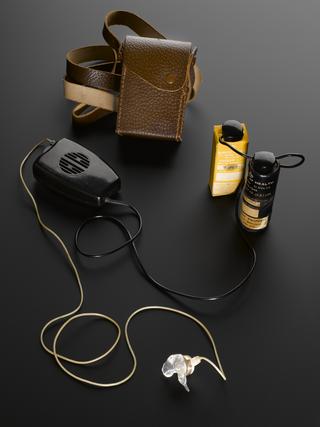
Gutta-percha ear trumpet hearing aid, 1840-1910
- Made:
- 1840-1910 in United Kingdom




Ear trumpet hearing aid, made of gutta percha by an unknown maker, English, 1840-1910. Once the property of Dr William Laidlaw Purves.
Gutta percha hearing aid, unknown maker, English, 1840-1910. Once the property of Dr William Laidlaw Purves (1842 – 1917) was a Scottish-born surgeon who also significantly contributed to the development of the sport of golf.
Gutta percha was introduced in Britain in 1843. It was not originally used as a cable insulator, but was popular due to its chemical properties, which made it easy to shape and mould. It was used to make everything from industrial components like machinery belts and tubes, to chessmen and other small items, like this snuff box. The process for making tubes was soon adapted to make cable coverings, due to its insulating properties, which improved under the pressure and temperatures found on the sea bed. By 1861, over one thousand tons of gutta percha was being imported by Britain each year. Gutta percha was used for cable insulation until the late 1930s, when it began to be replaced by polyethylene.
Details
- Category:
- Audiology
- Collection:
- Sir Henry Wellcome's Museum Collection
- Object Number:
- A602551
- Materials:
- gutta-percha
- type:
- hearing aid
- credit:
- On loan from Wellcome Trust




